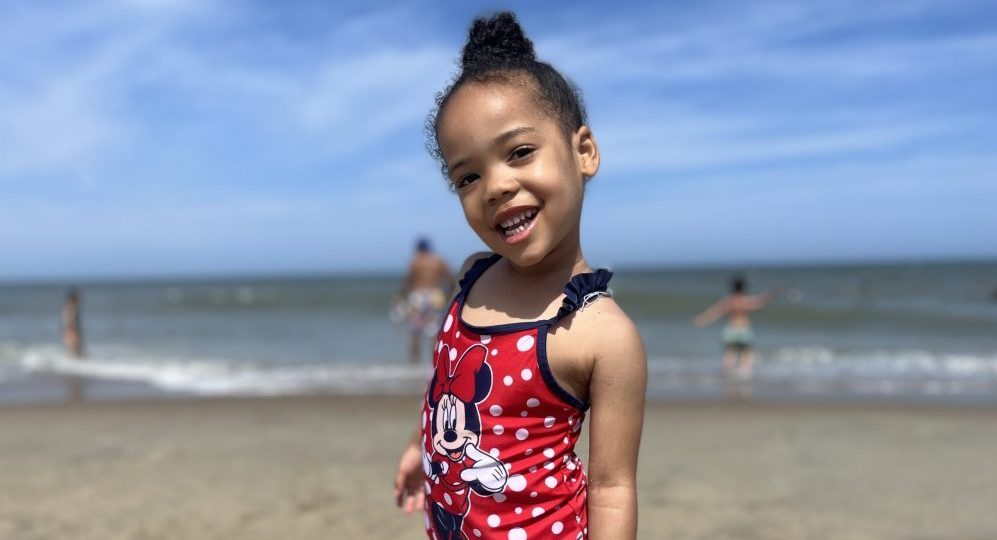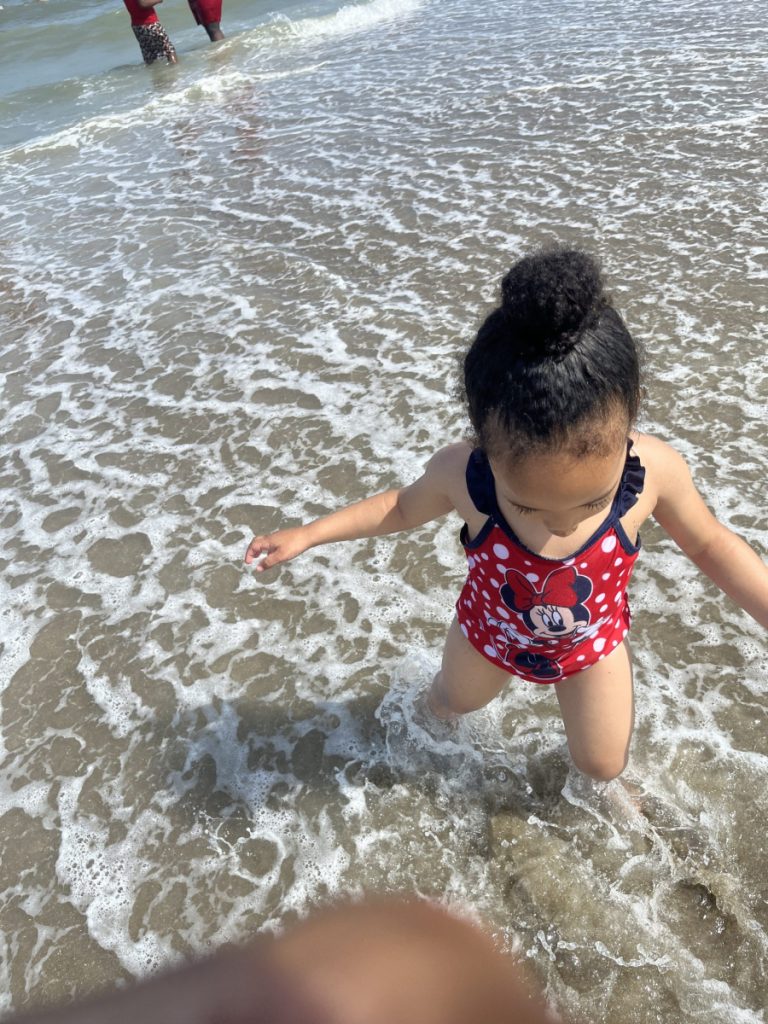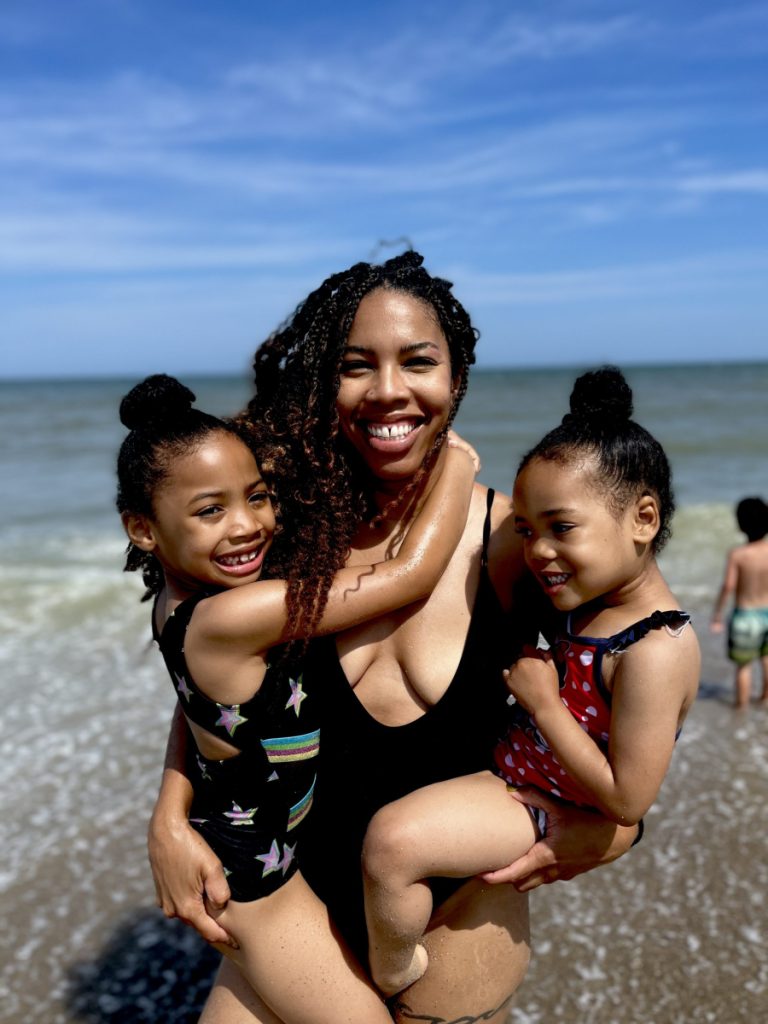I Took My Toddler with Seafood Allergies to the Beach for the First Time

Editor’s Note: This column is not intended for medical advice. Please consult your pediatrician or an allergist if you have concerns about your child and food allergies.
A few months ago, it hit me that there was but one thing stopping my family from visiting the beach: my toddler’s host of seafood allergies.
My 3-year-old has many of the major common food allergies, including several kinds of fish and crustaceans. There are more than 170 foods reported to give people allergic reactions, but there are nine major food allergens in milk, egg, peanut, tree nuts, wheat, soy, fish, crustacean shellfish and sesame. My daughter has all but two.
Introducing her to a creamy seafood chowder is actually how her allergies were discovered.
This week marks Food Allergy Awareness Week.
Black children have a greater risk for developing food allergies but are less likely to be diagnosed.
Readysetfood.com, 2023
Having a child with allergies is a special kind of parental challenge that gets missed, so I’m thankful there is a whole week dedicated to it. One in 13 children in United States live with food allergies. The number of children with food allergies doubled between 1997 and 2011, and about 40% of children with food allergies have more than one.
Black children have a greater risk for developing food allergies but are less likely to be diagnosed. They also have a higher frequency of emergency room visits. Black children are also less likely to receive allergist care to manage food allergies or to have a current epinephrine prescription (a medication, like EPIPEN or AUVI-Q, used to treat serious allergic reactions).
We were very lucky to find a Black pediatric nutritionist who helped shrink the shock of finding out my child had food allergies. I was dwelling on all that she can’t eat instead of all of the wonderful foods she could eat.
Seafood is my daughter’s most prominent, so I hadn’t even thought about visiting anyone’s beach — until a couple of months ago.
My Google fingers got work, but I couldn’t find the answer. Could you take a child with seafood allergies to the beach? Sounds simple, but I couldn’t go without knowing for sure.
Even our pediatrician could not say yes with complete confidence.
Turns out, the answer was as simple as the question: absolutely, with some safety measures.
Our allergist told us as long as she avoids putting sea life in her mouth, she could stay safe at the beach. That meant no collecting shells, since fresh proteins could still be present, and potentially not eating at beach-town restaurants because of the heightened risk of cross contamination.
The weight of the frustration and angst of not knowing fell off, and we started planning for the beach.
Atlanta is a few-hours-long drive to Savannah, and we only had time for a daytrip. We packed a picnic basket containing lunch, snacks and refreshments as to avoid eating anywhere on Tybee Island. We also asked for an updated EPIPEN. We have luckily never had to use an EPIPEN injection; we do keep Benadryl stocked in case of minor exposure at home.

One thing I’ve learned about food allergies in children is the agency it gives them.
One thing I’ve learned about food allergies in children is the agency it gives them. My daughter understands her food allergies incredibly well, and so do the children around, including her older sister. In fact, my mother took them to a recent birthday party, and it was the first time my youngest encountered cotton candy.
Apparently, she hurriedly asked my mom and her older sister if she was allergic. “Am I allergic? Am I allergic? Can somebody tell me if I’m allergic?!” is how the conversation went. As much as she pressed for an answer, she didn’t eat it until she knew she wasn’t allergic. A reminder: she is 3.
But knowing what measures we’ll all take to keep her safe gave me the confidence to trust that a toddler would try her hardest to keep things out of her mouth.
Before going to the beach, we talked to her about being cautious of putting things in her mouth. We wiped her hands down before and after she ate anything from the picnic. We monitored her food (a daily task). And eventually, we were able to relax and let the children enjoy the shore.
Food allergies have added an interesting wrinkle into parenting. I have to pack her breakfast, lunch, dinner and snacks for school each day. We have to bring her special treats to birthday parties, because who has gluten-free, vegan pizza and cake on deck? It’s so embedded into our lives now.
My daughter is young and can likely grow out of some of these allergies. She’s so far outgrown two tree nuts so far (but if your child has a tree nut allergy, I think it’s best to omit specifics when informing schools and families so that no one makes a mistake).
My greater family has struggled tremendously understanding my daughter’s food allergies.
Food allergy symptoms may not be what we expect, either. It could be itching or vomiting. If you have suspicions, consider blood and skin tests to rule out food allergies.
And to the food allergy parents: we were called to do this, so trust yourself.

And to the food allergy parents: we were called to do this, so trust yourself. Our children are special. With due diligence and research, there’s not much they have to miss out on, like a beautiful day by the ocean.
MORE LIKE THIS
What This Pediatric Dietitian Wants Parents to Know About Food Allergies
